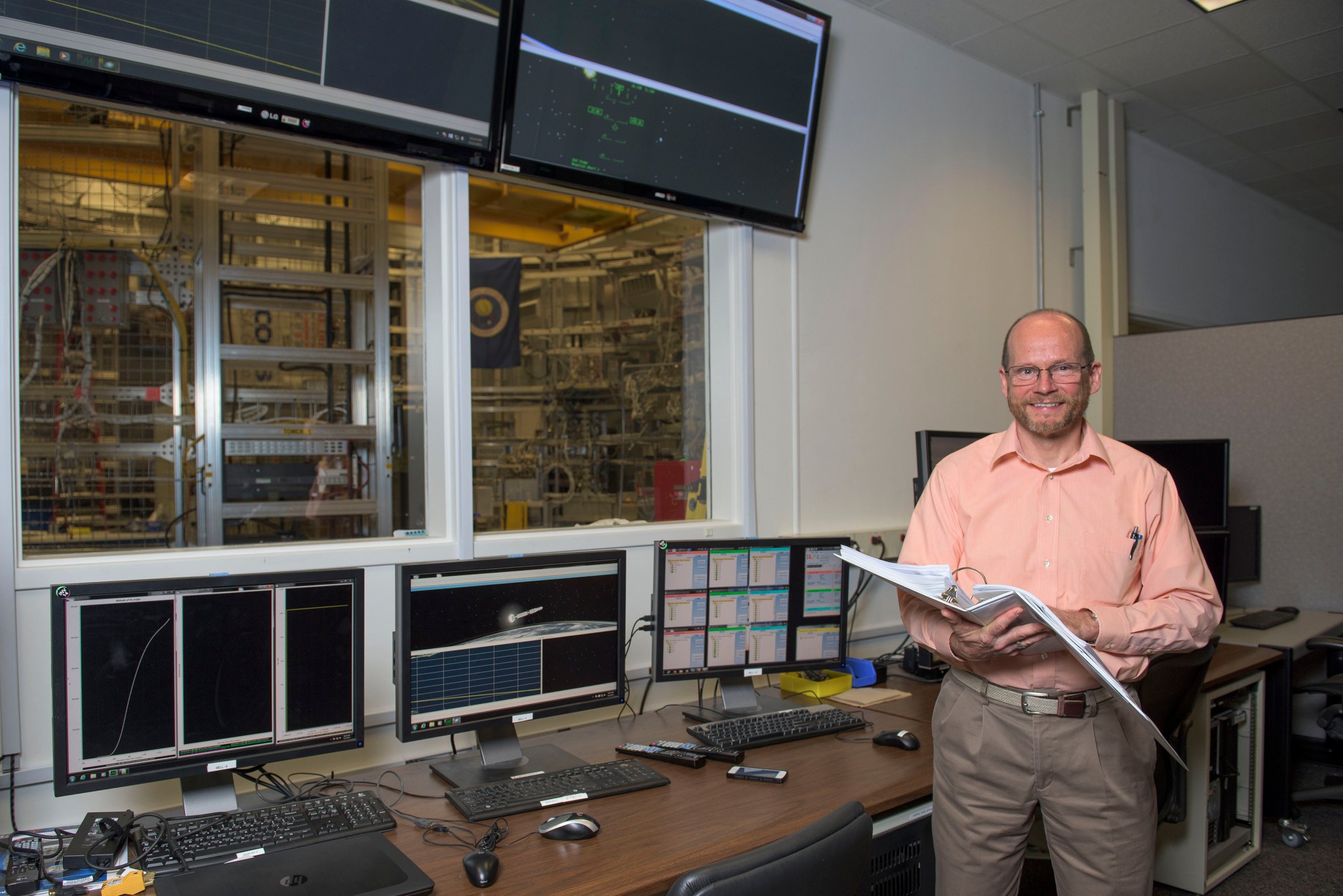John Hanson is keeping his eyes on the prize of helping build the most powerful rocket in history, NASA’s Space Launch System, for the journey to Mars and other destinations in deep space. And for those efforts, he’s getting a prestigious prize of his own from the world’s largest aerospace professional society.
Hanson, alternate lead systems engineer in the Spacecraft and Vehicle Systems Department of the Engineering Directorate at NASA’s Marshall Space Flight Center in Huntsville, Alabama, has been honored by the American Institute of Aeronautics and Astronautics (AIAA) with the 2016 de Florez Award for Flight Simulation.
The award is for Hanson’s outstanding innovations and contributions in flight simulation applications for SLS design, development and requirements verification. “It is such an honor to win this award,” Hanson said. “And I’m excited about helping make SLS a success.”
AIAA will present Hanson with his award during a Jan. 5 ceremony in San Diego. “John is considered the ‘go-to guy’ for how to apply flight simulation for launch vehicle success,” said John Hutt, SLS lead systems engineer who nominated Hanson for the award. “He earned this respect through many years of innovative, thoughtful application of his expansive talent.”
Hanson’s NASA career spans more than 25 years. In his current role at Marshall, where the SLS Program is managed for the agency, he is responsible for the development of SLS vehicle system requirements and verification. He also has led the implementation of SLS model-based design development, which is used to create simulations that aid in determining things like the rocket’s guidance, navigation and control systems.
Hanson also was an integral part of the successful completion of the SLS critical design review – a first in almost 40 years for a NASA human-rated rocket.
“SLS is a complex machine that has a lot of parts that need to work together,” Hanson said. “So in my job, I have to know something about just about everything that is going on with SLS, and try to solve issues when they come up — issues that involve more than just one group of people who can solve them. I spend a lot of time talking to people and working with them to figure things out.”
“For my whole career at NASA, I’ve wanted to contribute to making something fly successfully in space — something that is important to the nation,” Hanson added. “SLS is my opportunity to do that, and I want to make the best of it.”
Originally from Columbia, Maryland, Hanson holds a bachelor’s degree in physics from Loyola University in Baltimore, and a master’s degree and a doctorate in aerospace engineering from the University of Michigan in Ann Arbor.
During his NASA career, he has received several other awards for his work, including a NASA Exceptional Achievement Medal and a Silver Snoopy Award. The Silver Snoopy is one of the agency’s highest honors for outstanding achievements related to human flight safety or mission success. The award is presented by the NASA astronaut corps, as it represents the astronauts’ own recognition of excellence.
Per AIAA, the de Florez Award for Flight Simulation honors the memory of the late Admiral Luis de Florez, who was influential in the development of early flight simulators, and was a pioneer in the use of “virtual reality” to simulate flight and combat situations in World War II. The award recognizes an outstanding individual achievement in the application of flight simulation to aerospace training, research and development.
The SLS Block I configuration will have a minimum 70-metric-ton (77-ton) lift capability and be powered by twin boosters and four RS-25 engines. The next planned upgrade of SLS, Block 1B, would use a more powerful exploration upper stage for more ambitious missions with a 105-metric-ton (115-ton) lift capacity. Block 2 will add a pair of advanced solid or liquid propellant boosters to provide a 130-metric-ton (143-ton) lift capacity. In each configuration, SLS will continue to use the same core stage and four RS-25 engines.
For more information on SLS, visit:
Tracy McMahan
Marshall Space Flight Center, Huntsville, Alabama
256-544-0034
tracy.mcmahan@nasa.gov

























